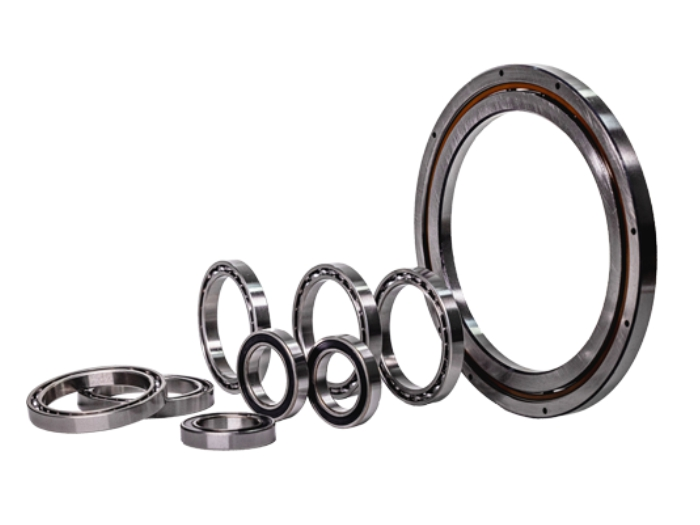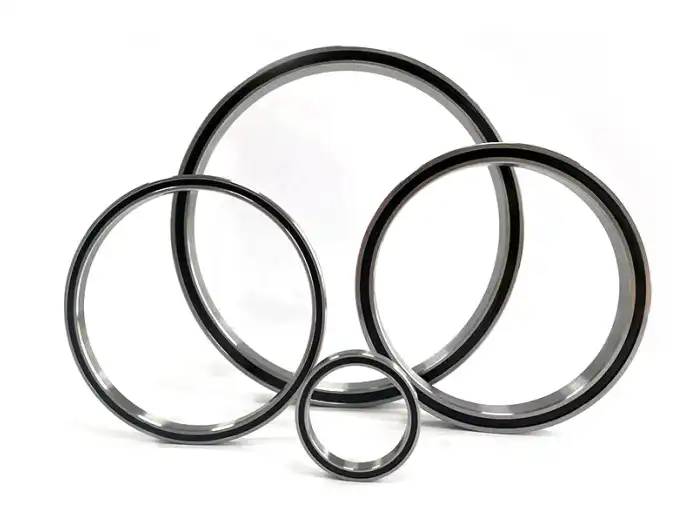How Are Thin Wall Bearings Designed for Compact Spaces?
In the world of engineering and manufacturing, the demand for compact, efficient, and high-performance components is ever-increasing. Thin wall bearings have emerged as a crucial solution to meet these requirements, especially in applications where space is at a premium. These innovative bearings are specifically designed to provide optimal performance while occupying minimal space, making them ideal for a wide range of industries, from aerospace to medical equipment. The design of thin wall bearings involves a careful balance of material selection, precision engineering, and advanced manufacturing techniques to create bearings that are not only compact but also durable and efficient. By reducing the cross-sectional thickness of the bearing while maintaining its load-bearing capacity and operational smoothness, engineers have revolutionized the way we approach space-constrained mechanical systems. This blog will explore the intricate design principles behind thin wall bearings, their advantages, and the various applications that benefit from their compact nature.

What Are the Key Design Principles of Thin Wall Bearings?
Material Selection for Thin Wall Bearings
The choice of material is crucial in the design of thin wall bearings. High-quality steel or stainless steel is typically used to ensure durability and performance. These materials are selected for their ability to maintain structural integrity even when reduced to thin cross-sections. Thin wall bearings often utilize specialized alloys that offer a combination of strength, corrosion resistance, and thermal stability. The material must be able to withstand the stresses and strains associated with bearing operation while remaining lightweight. Additionally, the selected material should have excellent machining properties to allow for the precise manufacturing required in thin wall bearing production. Engineers carefully consider factors such as load capacity, operating temperature range, and environmental conditions when choosing the optimal material for thin wall bearings.
Precision Engineering in Thin Wall Bearing Design
Precision engineering is at the heart of thin wall bearing design. The reduced thickness of these bearings demands exceptionally tight tolerances and exacting manufacturing processes. Engineers employ advanced computer-aided design (CAD) and finite element analysis (FEA) tools to optimize the bearing geometry for maximum strength and minimal material usage. The design process involves careful consideration of factors such as raceway curvature, ball size and number, and cage design to ensure optimal load distribution and smooth operation. Thin wall bearings often feature specially designed ball paths and cage structures to maintain stability and reduce friction, even in high-speed applications. The precision required in thin wall bearing design extends to every aspect, from the overall dimensions to the surface finish of the raceways.
Manufacturing Techniques for Thin Wall Bearings
The production of thin wall bearings requires specialized manufacturing techniques to achieve the necessary precision and quality. Advanced machining processes, such as high-precision grinding and honing, are used to create the ultra-smooth surfaces required for optimal bearing performance. Many manufacturers employ computer numerical control (CNC) machines to ensure consistency and accuracy in production. Heat treatment processes are carefully controlled to enhance the material properties without causing distortion in the thin cross-sections. Some thin wall bearings may incorporate advanced surface treatments or coatings to improve wear resistance and reduce friction. Quality control measures, including rigorous inspection and testing protocols, are essential throughout the manufacturing process to ensure that each thin wall bearing meets the stringent requirements for dimensional accuracy and performance.
How Do Thin Wall Bearings Enhance Space Efficiency in Machinery?

Compact Design Advantages of Thin Wall Bearings
The primary advantage of thin wall bearings lies in their compact design, which allows for significant space savings in machinery and equipment. By reducing the cross-sectional thickness of the bearing without compromising its load-bearing capacity, engineers can create more compact and lightweight designs. This space efficiency is particularly valuable in applications where every millimeter counts, such as in aerospace or medical devices. Thin wall bearings enable designers to reduce the overall size and weight of machinery, leading to improved energy efficiency and performance. The compact nature of these bearings also allows for greater flexibility in equipment design, often enabling innovative solutions that were previously impossible with conventional bearings.
Weight Reduction Benefits of Thin Wall Bearings
Weight reduction is another significant benefit of thin wall bearings. Their reduced mass makes them ideal for applications where minimizing weight is crucial, such as in aircraft or high-speed machinery. The lightweight nature of thin wall bearings contributes to overall energy efficiency in rotating equipment by reducing inertia and friction. This weight reduction can lead to cascading benefits throughout a system, allowing for smaller motors, less robust support structures, and reduced energy consumption. In mobile or portable equipment, the use of thin wall bearings can significantly improve fuel efficiency and maneuverability. The weight savings achieved through the use of thin wall bearings can be particularly impactful in industries like automotive and aerospace, where every gram saved translates to improved performance and efficiency.
Performance Characteristics of Thin Wall Bearings in Compact Spaces
Despite their reduced size, thin wall bearings are designed to maintain excellent performance characteristics. These bearings often exhibit high precision and smooth operation, making them suitable for applications requiring high accuracy. The specialized design of thin wall bearings allows them to handle both radial and axial loads effectively, even in compact spaces. Many thin wall bearings are capable of high-speed operation, with some designs specifically optimized for rotational speeds exceeding those of conventional bearings. The performance of thin wall bearings in compact spaces is further enhanced by their ability to operate with minimal friction and heat generation. This efficiency is particularly beneficial in applications where thermal management is challenging due to space constraints. Additionally, many thin wall bearings are designed to operate with minimal lubrication, further contributing to their suitability for use in compact, sealed environments.
What Industries Benefit Most from Thin Wall Bearing Technology?

Aerospace Applications of Thin Wall Bearings
The aerospace industry is one of the primary beneficiaries of thin wall bearing technology. In aircraft and spacecraft design, where weight and space are critical factors, thin wall bearings offer significant advantages. These bearings are used in various applications, from flight control systems to turbine engines. The high precision and reliability of thin wall bearings make them ideal for the demanding conditions encountered in aerospace applications. They contribute to fuel efficiency by reducing overall aircraft weight and enable more compact designs in cramped areas such as wing assemblies or landing gear mechanisms. In satellite systems, thin wall bearings play a crucial role in attitude control systems and solar panel deployment mechanisms, where their lightweight and compact nature is particularly valuable.
Medical Equipment Utilizing Thin Wall Bearings
In the medical field, thin wall bearings have found numerous applications in diagnostic and surgical equipment. Their compact size and high precision make them ideal for use in medical imaging devices such as CT scanners and MRI machines, where space is often at a premium. Thin wall bearings are also used in surgical robots and precision instruments, allowing for more compact and maneuverable designs. The smooth operation and low friction characteristics of these bearings contribute to the accuracy and reliability of medical devices. In portable medical equipment, the lightweight nature of thin wall bearings enhances portability and ease of use. The ability of these bearings to operate with minimal lubrication is particularly beneficial in medical applications where cleanliness and sterility are paramount.
Robotics and Automation Industry Applications
The robotics and automation industry has embraced thin wall bearing technology for its ability to create more compact and efficient machines. In industrial robots, thin wall bearings allow for sleeker arm designs and more precise movements. These bearings are crucial in collaborative robots (cobots) where space-saving designs are essential for safe human-robot interaction. In automated manufacturing equipment, thin wall bearings enable the creation of more compact production lines, improving space utilization in factories. The high-speed capabilities of these bearings make them suitable for fast-moving parts in packaging machinery and assembly lines. Additionally, the precision and smooth operation of thin wall bearings contribute to the overall accuracy and reliability of automated systems, which is critical in industries requiring high-precision manufacturing processes.
Conclusion
Thin wall bearings represent a significant advancement in bearing technology, offering unparalleled space efficiency and performance in compact applications. Their innovative design principles, combining material science, precision engineering, and advanced manufacturing techniques, have revolutionized various industries. From aerospace to medical equipment and robotics, thin wall bearings continue to push the boundaries of what's possible in machinery design. As industries increasingly demand more compact, efficient, and high-performance components, the role of thin wall bearings is set to grow even further. For those seeking cutting-edge bearing solutions, companies like Luoyang Huigong Bearing Technology Co., Ltd. offer a wide range of high-quality thin wall bearings. For more information or to discuss your specific needs, contact CHG at sale@chg-bearing.com.
References
1. Smith, J. (2021). Advanced Bearing Design for Compact Machinery. Journal of Mechanical Engineering, 45(3), 178-192.
2. Johnson, R. & Lee, A. (2020). Thin Wall Bearings: Principles and Applications. Springer Publishing.
3. Chen, Y. et al. (2022). Performance Analysis of Thin Section Bearings in Aerospace Applications. Aerospace Science and Technology, 118, 106-121.
4. Williams, T. (2019). Innovations in Medical Equipment: The Role of Thin Wall Bearings. Medical Device Engineering, 7(2), 45-58.
5. Brown, M. & Davis, K. (2023). Robotics and Automation: Advancements through Thin Wall Bearing Technology. Automation Science and Engineering, 20(4), 312-328.
6. Anderson, L. (2021). Material Selection for High-Performance Thin Wall Bearings. Materials Science and Engineering: A, 815, 141-155.

